By Aurelie Desgardin
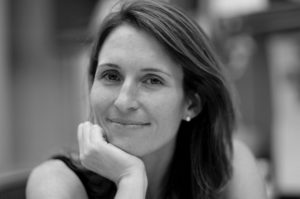 There are good scientific mentors. There are good professional life mentors. But good scientific mentors are not necessarily good career mentors. Those who are great at both deserve recognition. Dr. Erin Adams is quite the perfect example of someone who can offer great scientific advice and personal guidance. She is definitely someone I wish I had met earlier in my career. Dr. Adams is a fantastic mentor beyond the bench, the Joseph Regenstein Professor of Biochemistry and Molecular Biology, serves on the Committees on Immunology and, Cancer Biology at the University of Chicago. She is also a Principal Investigator of the myCHOICE program.
There are good scientific mentors. There are good professional life mentors. But good scientific mentors are not necessarily good career mentors. Those who are great at both deserve recognition. Dr. Erin Adams is quite the perfect example of someone who can offer great scientific advice and personal guidance. She is definitely someone I wish I had met earlier in my career. Dr. Adams is a fantastic mentor beyond the bench, the Joseph Regenstein Professor of Biochemistry and Molecular Biology, serves on the Committees on Immunology and, Cancer Biology at the University of Chicago. She is also a Principal Investigator of the myCHOICE program.
Mentoring at its BEST.
Remembering her own journey, Dr. Adams recalls moments of frustration and introspection: “What to do next?” It’s a question that is in anyone’s mind in moments of transition. A Northern California native, she went on to discover the culture of research as a lab technician after getting her undergraduate degree at UCSD. She received her Ph.D. in population genetics and molecular biology from the University of California, Berkeley. As a postdoc at Stanford, she thought long and hard about what she likes to do and decided to stay in academia because “I enjoy asking questions”. She adds that: “It’s not easy to make decisions that will determine your future and scientists receive no training in the matter”.
It is specifically because Erin Adams knows this that she is so successful as a BEST (Broadening Experiences in Scientific Training) principal investigator. The NIH BEST award funds the myCHOICE initiative which has been a massive success ever since its launch, attracting trainees from outside institutions and new graduate students to the University. myCHOICE exposes graduate students and postdocs from STEM fields to various career paths, in addition to academic research. myCHOICE seminars and skills-focused workshops are eye-opening. From policy to science communication, from technology transfer to clinical research, SCIENCE in truth, is everywhere! It’s in every aspect of our communities and our culture.
The grateful mentor.
Gratitude is always at the forefront of Dr. Erin Adams’ mind. It is what keeps her going strong despite life’s many challenges. When asked about how she manages the many hats that she wears so well, Erin does not hesitate to share that passion is a driver: “Passion for the future of my people, passion for science, passion for time”. She admits that on hard days “it’s the small things that keep the wheel turning and you need a good night sleep”.
As a single mother of a toddler and a few four-legged family members, mentor of many on top of her involvement in commendable initiatives, Erin confesses that willful gratitude is what keeps her going. She goes on to explain that pre-tenure, she had a tough time. The uncertainty and lack of control over her own trajectory made her life uneasy. Erin explains that everything changed when she adopted Xena, then an 8 weeks old puppy. She has been extremely grateful for Xena. Somehow, being grateful triggered a chain reaction of events and everything fell into place, including the tenure. She admits “I am very lucky! I am grateful for my son, my position, the numerous opportunities to make important contributions to how the world moves forward.” She believes that gratitude is what keeps life flowing the right way, keeps one open to opportunities and, keeps one finding one’s happy place.
When it comes to the day to day of research, Dr. Adams does not believe in micro-managerial approaches to mentorship. She believes that letting her mentees be independent helps them develop critical troubleshooting and social skills. After all, one needs “to know how to ask for help and interact with others” to bloom. She also remembers the days when science not going well meant that nothing was good. Recognizing this unhealthy mindset, she encourages work/life balance and leads by example.
Dr. Adams personifies hard work and dedication mixed in with calm and devotion. One step in her office and you are transported into her world. There is color, texture, intimate furniture that create a very warm and lively yet uncluttered workspace. It feels like home! Xena most certainly helps with that. Erin is bringing her in everyday It’s like having therapy at work for Erin and her lab members and the rest of the department.
Mentoring laterally!
Bringing awareness to male colleagues about the under-representation of women in higher positions within STEM fields is something that Dr. Adams has no problem voicing up. Dr. Adams is not going to simply let male counterparts repeat her statements and get the credit she is due. She speaks out about implicit bias, the lack of diversity in applicant pools and gets men to start thinking differently. Her take on the issue if that “we need to speak more about the issue, we need to advocate, be supportive and mentor the women who are already in STEM fields”.
I believe that Dr. Erin Adams’ capacity to make anyone feel comfortable enough to be genuine is her greatest gift. It allows for those important conversations to take place and be constructive. It allows for growth and impact. Dr. Erin Adams certainly had an impact at the University of Chicago and we look forward to more!

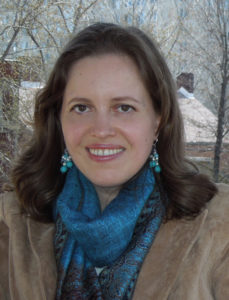 The first time I met Yulia was in 2015 when I visited Dr. Brian Popko’s laboratory to finalize my rotation. She smiled at me and said: “Whenever you have a question, you can come to me.” I thought her words were probably just a hint of her being a nice and polite senior postdoc in Dr. Popko’s laboratory. However, it turned out she really meant it. Since 2015, Yulia has become my role model, my best lab mate, and best friend. She is one of the few people I met who refresh my mind to look and experience the world differently.
The first time I met Yulia was in 2015 when I visited Dr. Brian Popko’s laboratory to finalize my rotation. She smiled at me and said: “Whenever you have a question, you can come to me.” I thought her words were probably just a hint of her being a nice and polite senior postdoc in Dr. Popko’s laboratory. However, it turned out she really meant it. Since 2015, Yulia has become my role model, my best lab mate, and best friend. She is one of the few people I met who refresh my mind to look and experience the world differently.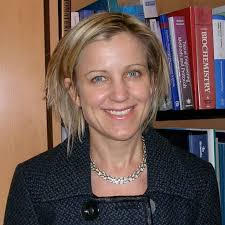 I confess that writing about Melody Swartz is a somewhat intimidating task. The world sees her as an Arnold and Mabel Beckman Young Investigator Award recipient, a winner of the National Science Foundation Early Career Award, and one of the Brilliant 10 named by Popular Science in 2006. There have already been numerous articles written about her; I was concerned that I would be rehashing another one of these articles that herald her many accomplishments. Nevertheless, I have the desire to do her achievements and even more so, the personal side of her story justice.
I confess that writing about Melody Swartz is a somewhat intimidating task. The world sees her as an Arnold and Mabel Beckman Young Investigator Award recipient, a winner of the National Science Foundation Early Career Award, and one of the Brilliant 10 named by Popular Science in 2006. There have already been numerous articles written about her; I was concerned that I would be rehashing another one of these articles that herald her many accomplishments. Nevertheless, I have the desire to do her achievements and even more so, the personal side of her story justice.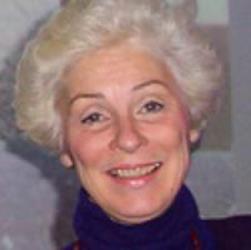 Dr. Nancy Schwartz often sits quietly, listening to scientists of all levels as though she is no different from the others in the room. Humility, a characteristic often attributed to womanhood, is partially why she is so successful. She listens, processes information, thinks about what to say so no word is left unweighted. She does not need to command respect with a loud voice and broad shoulders, she does it naturally and with a dash of class.
Dr. Nancy Schwartz often sits quietly, listening to scientists of all levels as though she is no different from the others in the room. Humility, a characteristic often attributed to womanhood, is partially why she is so successful. She listens, processes information, thinks about what to say so no word is left unweighted. She does not need to command respect with a loud voice and broad shoulders, she does it naturally and with a dash of class.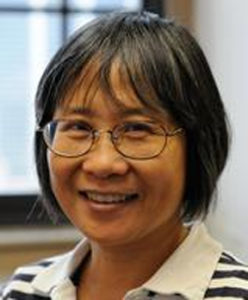 Dr. Sui Huang’s role model is Barbara McClintock, the Nobel Laureate who discovered transposable elements. In many ways, the two scientists are alike. Sui, like McClintock, has a fierce love and curiosity for science. She will often run into my lab with a grin on her face exclaiming about the latest piece of data that excites her. Sui is also an innovative scientist. Her ideas spark the imagination and push the limits of how we look at biology. Like McClintock, she is also persistent. Through the climate of tight funding, Sui continues to stay true to her honest pursuit of knowledge. As Sui serves in her current position as Associate Professor in the Cell and Molecular Biology Department at the Northwestern University Feinberg School of Medicine, she continues her joyful search for nuclear structures and functions in cancer cells and beyond.
Dr. Sui Huang’s role model is Barbara McClintock, the Nobel Laureate who discovered transposable elements. In many ways, the two scientists are alike. Sui, like McClintock, has a fierce love and curiosity for science. She will often run into my lab with a grin on her face exclaiming about the latest piece of data that excites her. Sui is also an innovative scientist. Her ideas spark the imagination and push the limits of how we look at biology. Like McClintock, she is also persistent. Through the climate of tight funding, Sui continues to stay true to her honest pursuit of knowledge. As Sui serves in her current position as Associate Professor in the Cell and Molecular Biology Department at the Northwestern University Feinberg School of Medicine, she continues her joyful search for nuclear structures and functions in cancer cells and beyond.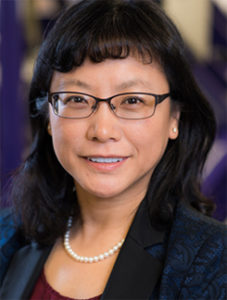 If you’re reading this article, whether on a screen or in print, you are using a product of manufacturing. Manufacturing converts raw materials into consumer goods—and due to mass production, more consumer goods are manufactured than ever before.
If you’re reading this article, whether on a screen or in print, you are using a product of manufacturing. Manufacturing converts raw materials into consumer goods—and due to mass production, more consumer goods are manufactured than ever before.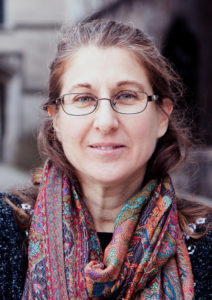 I still remember the first time I encountered Dr. Jocelyn Malamy, Associate Professor in the Department of Molecular Genetics and Cell Biology at the University of Chicago. She was giving the final set of lectures in one of the toughest classes I took my first year of graduate school. Immediately, I was struck by her enthusiasm and vigor, not only for plant biology, but also for the task at hand—teaching. Jocelyn is a past recipient of the Llewellyn John and Harriet Manchester Quantrell Award for Excellence in Undergraduate Teaching, which is no surprise for anyone who’s ever taken one of her classes. She feels that University of Chicago students are a “really gratifying group to work with, because you provide them good exciting things, and then they become excited.” This attitude was definitely reflected in her lectures for that course, which consistently engaged the audience in a way that many educators strive for their whole careers.
I still remember the first time I encountered Dr. Jocelyn Malamy, Associate Professor in the Department of Molecular Genetics and Cell Biology at the University of Chicago. She was giving the final set of lectures in one of the toughest classes I took my first year of graduate school. Immediately, I was struck by her enthusiasm and vigor, not only for plant biology, but also for the task at hand—teaching. Jocelyn is a past recipient of the Llewellyn John and Harriet Manchester Quantrell Award for Excellence in Undergraduate Teaching, which is no surprise for anyone who’s ever taken one of her classes. She feels that University of Chicago students are a “really gratifying group to work with, because you provide them good exciting things, and then they become excited.” This attitude was definitely reflected in her lectures for that course, which consistently engaged the audience in a way that many educators strive for their whole careers.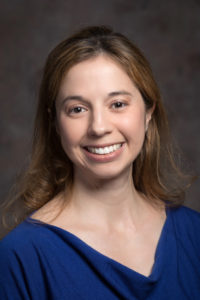 Dr. Laura Thorp, Physical Therapist turned Anatomist and now mom of four boys under the age of 5, is highly regarded as an educator by her students. In fact, she has been awarded on several occasions for Excellence in Teaching and having been one of her students, I can personally endorse her merit for these awards. I first met Dr. Thorp at Rush University Medical Center when she was an Assistant Professor of Anatomy and Cell Biology. As an aspiring professor of anatomy myself, I have always viewed Dr. Thorp as an important mentor and role model.
Dr. Laura Thorp, Physical Therapist turned Anatomist and now mom of four boys under the age of 5, is highly regarded as an educator by her students. In fact, she has been awarded on several occasions for Excellence in Teaching and having been one of her students, I can personally endorse her merit for these awards. I first met Dr. Thorp at Rush University Medical Center when she was an Assistant Professor of Anatomy and Cell Biology. As an aspiring professor of anatomy myself, I have always viewed Dr. Thorp as an important mentor and role model.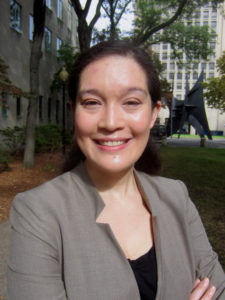 If you pause and consider your surroundings, you will find that a type of molecule, called a polymer, surrounds you. Polymers are large molecules that are made up of smaller molecules, called monomers. Monomers link together to form a polymer much in the same way that a necklace is made up of beads (discrete, repeating units).
If you pause and consider your surroundings, you will find that a type of molecule, called a polymer, surrounds you. Polymers are large molecules that are made up of smaller molecules, called monomers. Monomers link together to form a polymer much in the same way that a necklace is made up of beads (discrete, repeating units).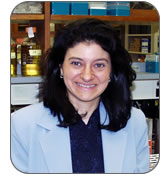 “Perseverance is something that pays back,” Dr. Anna Spagnoli told me a little after noon on a Monday in Chicago. Dr. Spagnoli currently holds the positions of Professor of Pediatrics and Women’s Board Chair of Pediatrics at Rush Children’s Hospital at Rush University Medical Center. Dr. Spagnoli seemed particularly busy as she was preparing for a visiting professorship in China later in the week.
“Perseverance is something that pays back,” Dr. Anna Spagnoli told me a little after noon on a Monday in Chicago. Dr. Spagnoli currently holds the positions of Professor of Pediatrics and Women’s Board Chair of Pediatrics at Rush Children’s Hospital at Rush University Medical Center. Dr. Spagnoli seemed particularly busy as she was preparing for a visiting professorship in China later in the week.